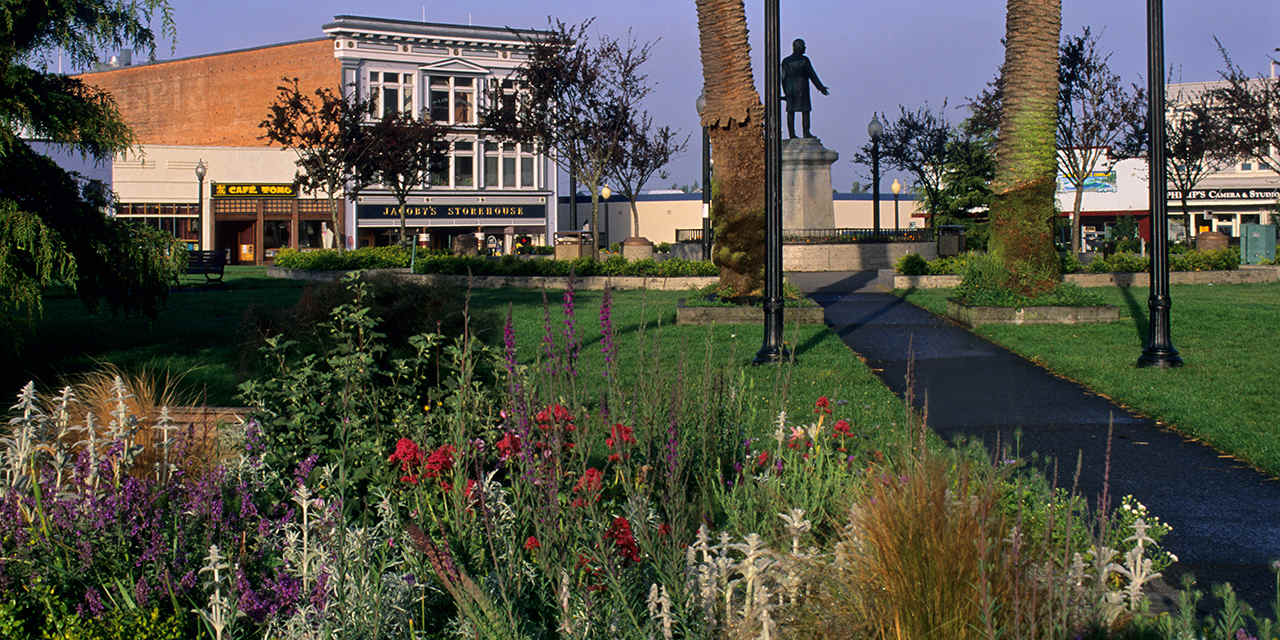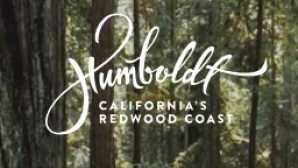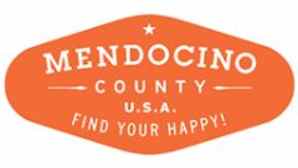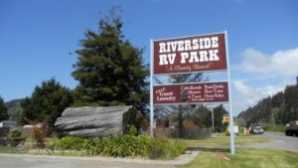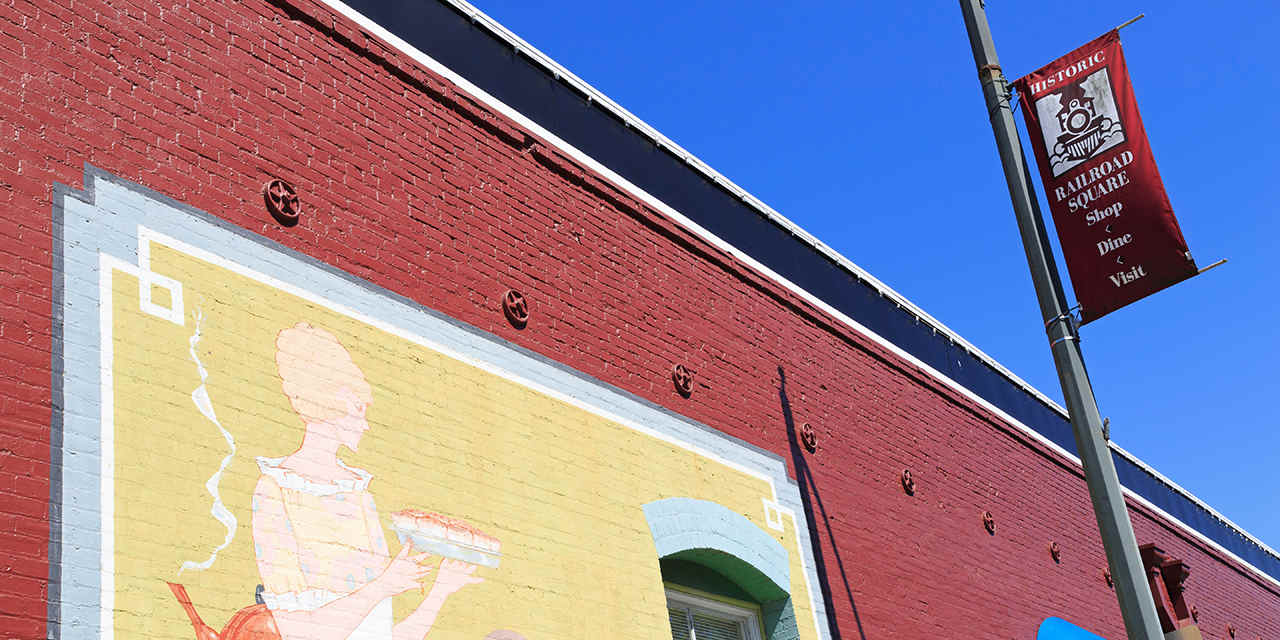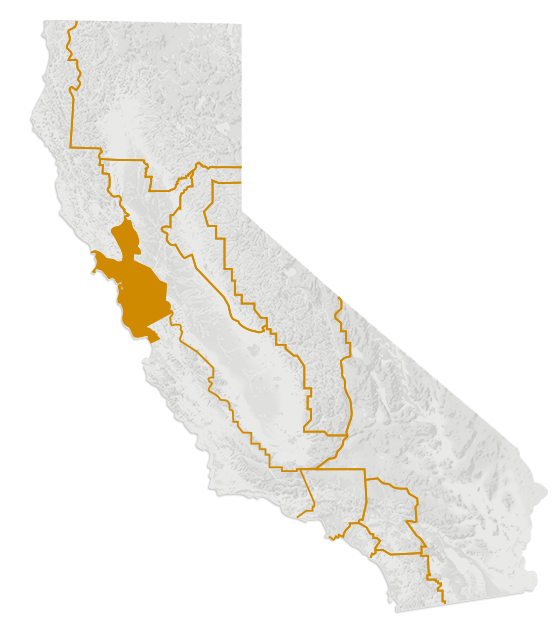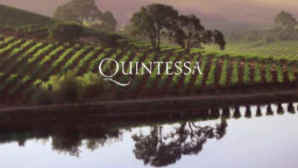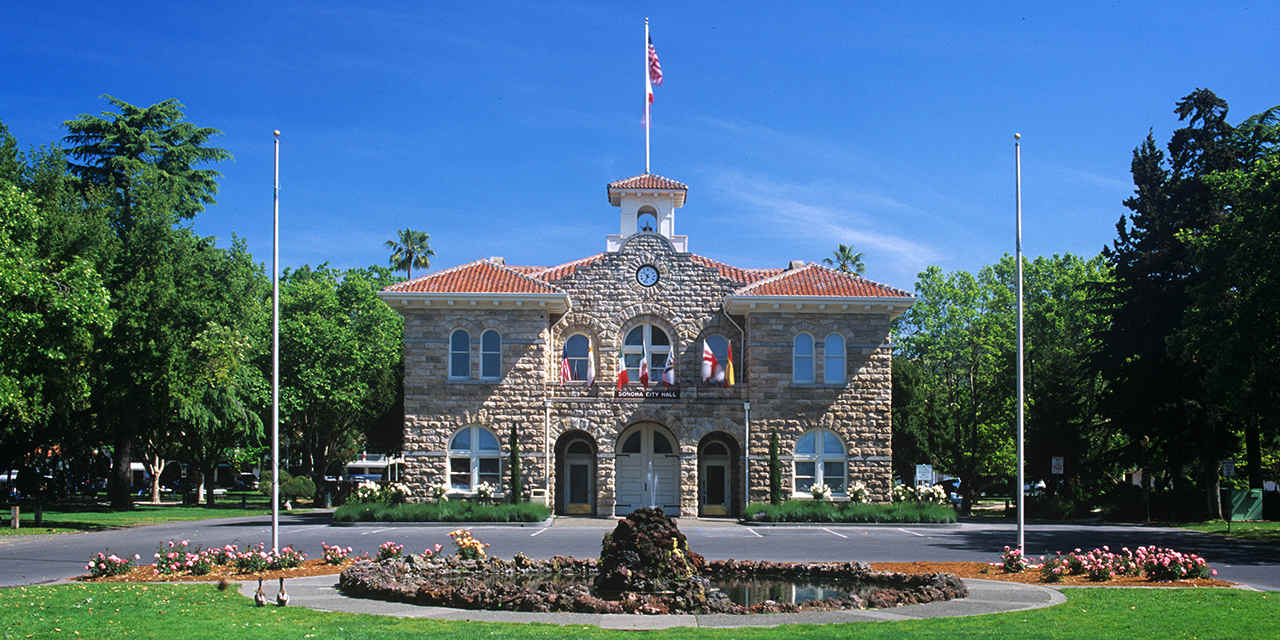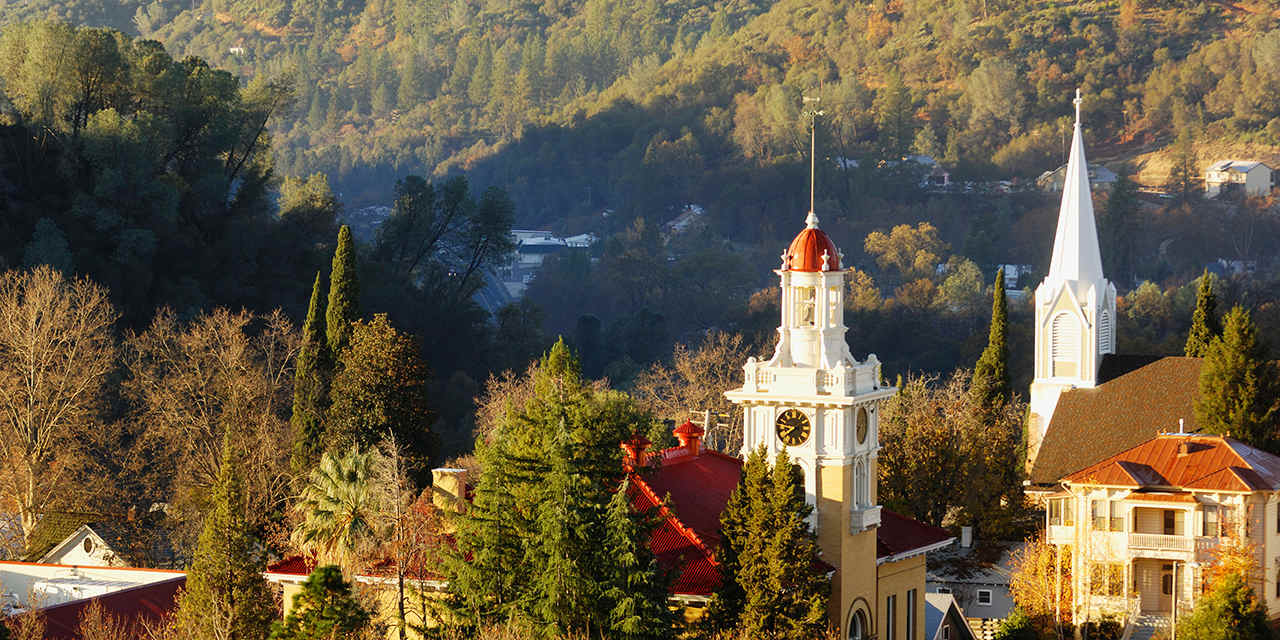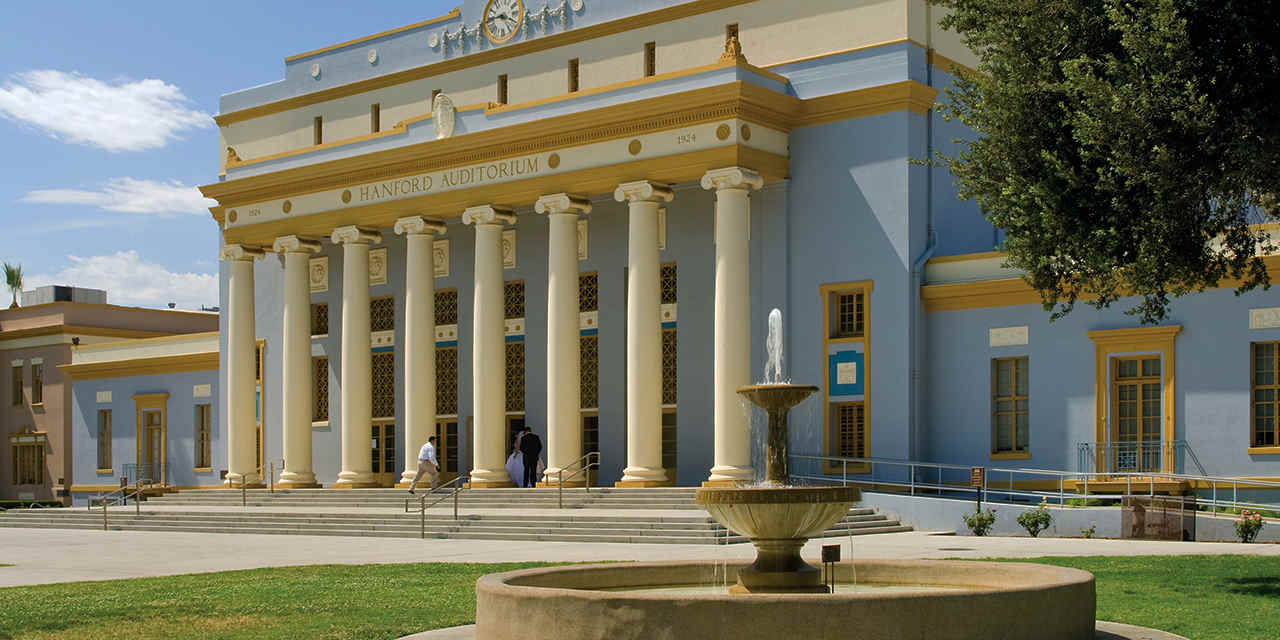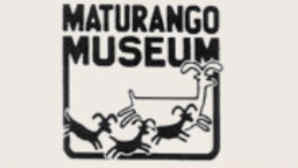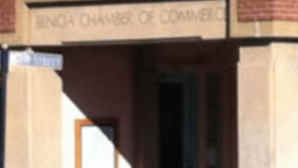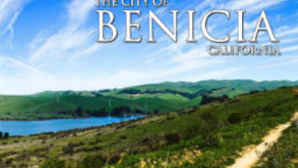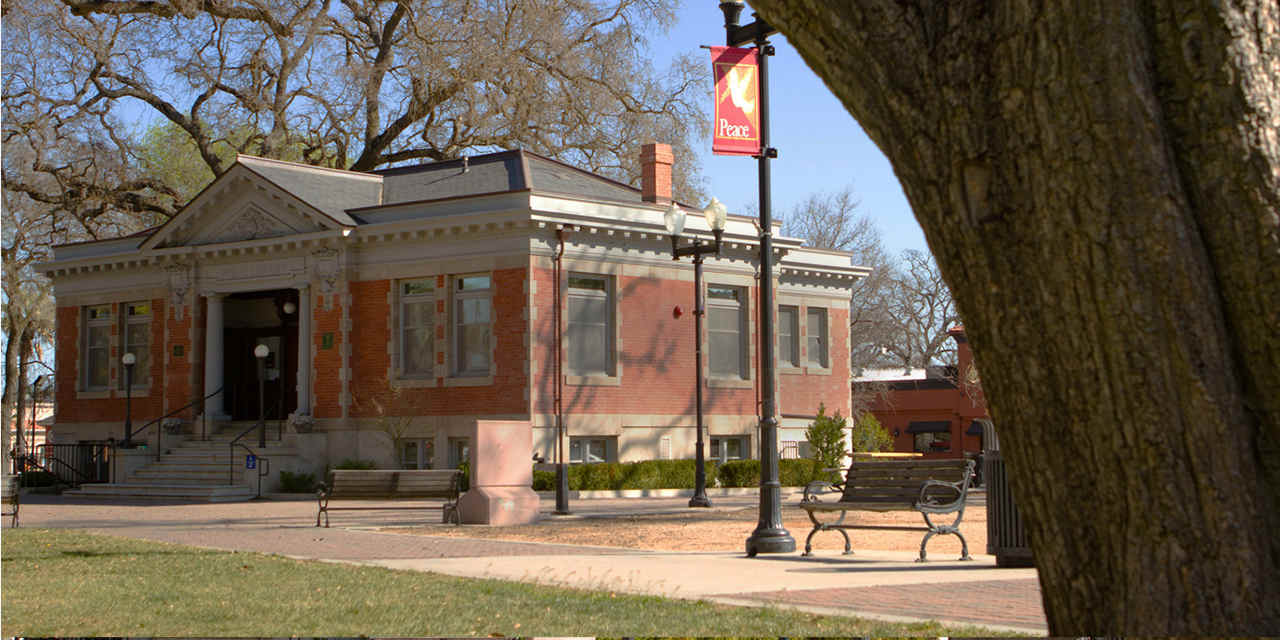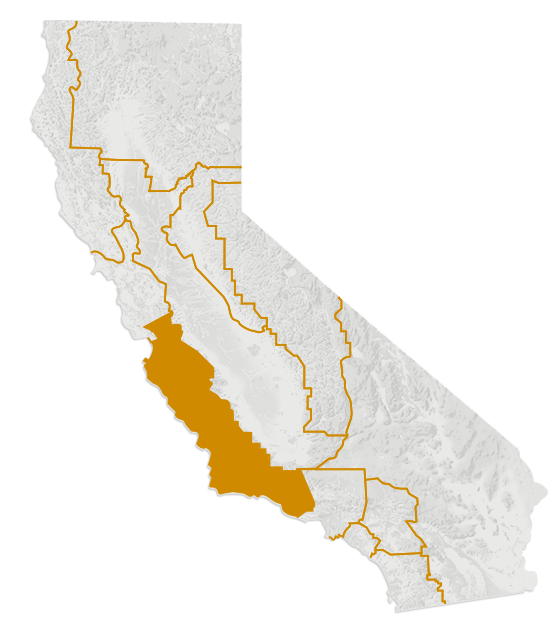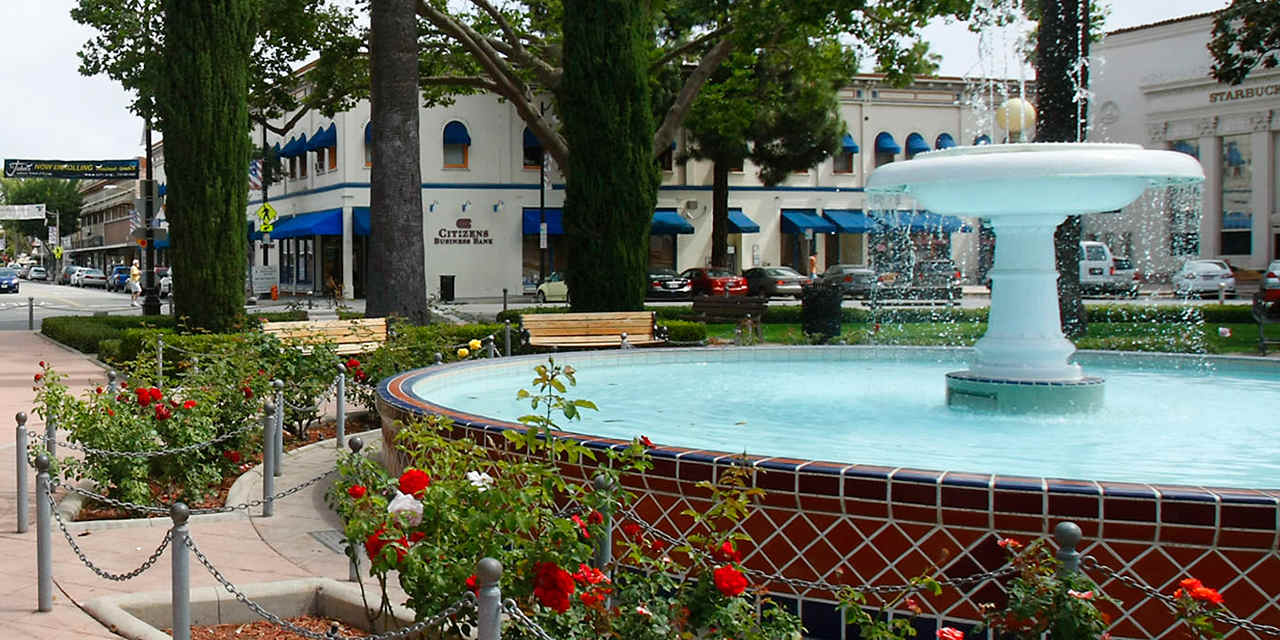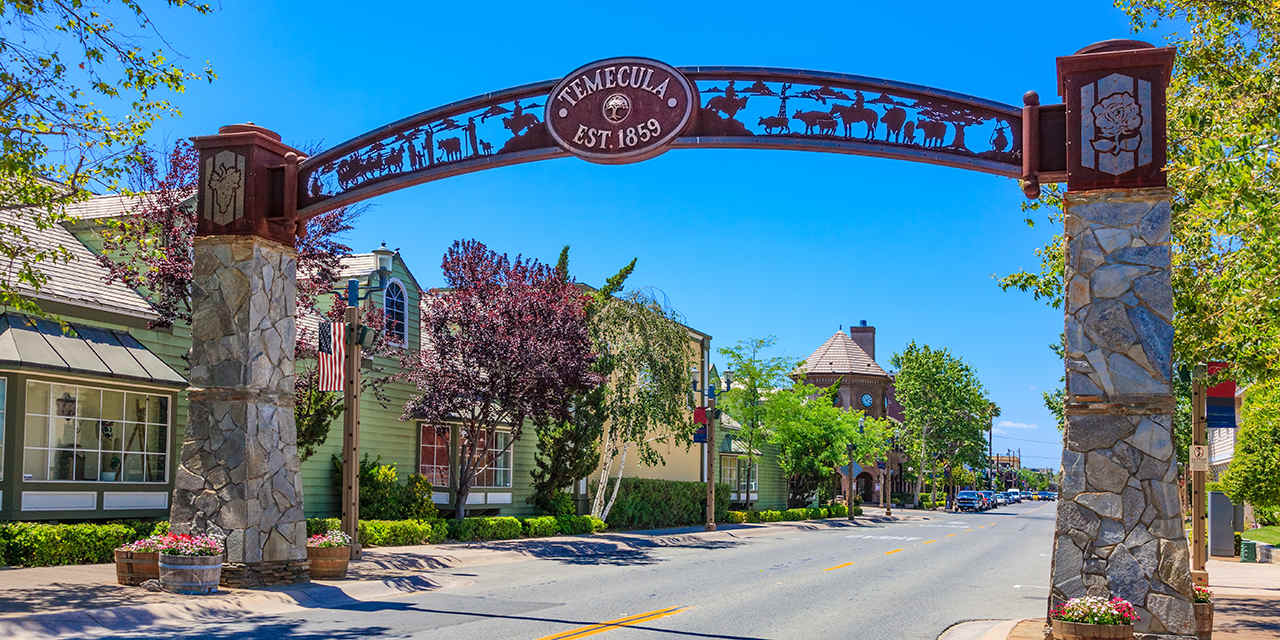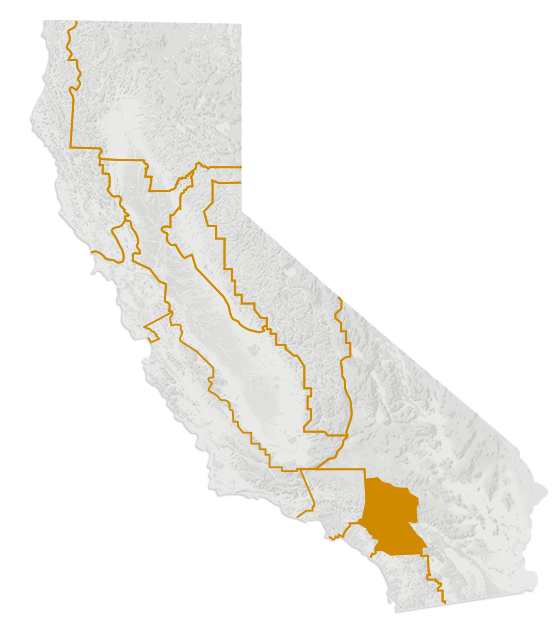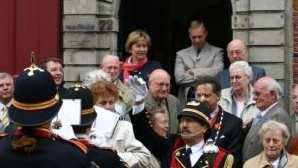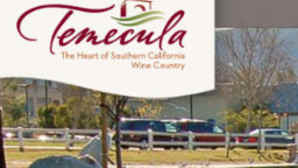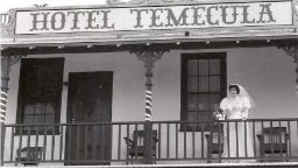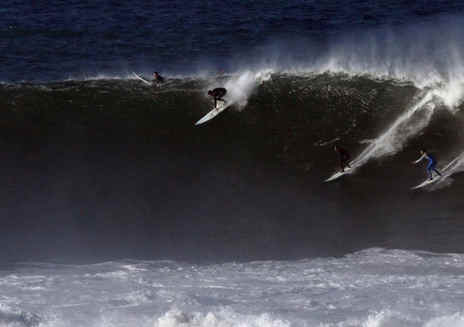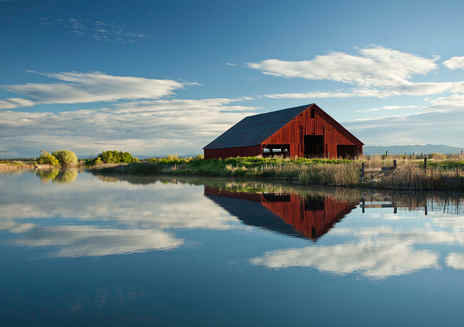For the latest on COVID-19 (Coronavirus) click here
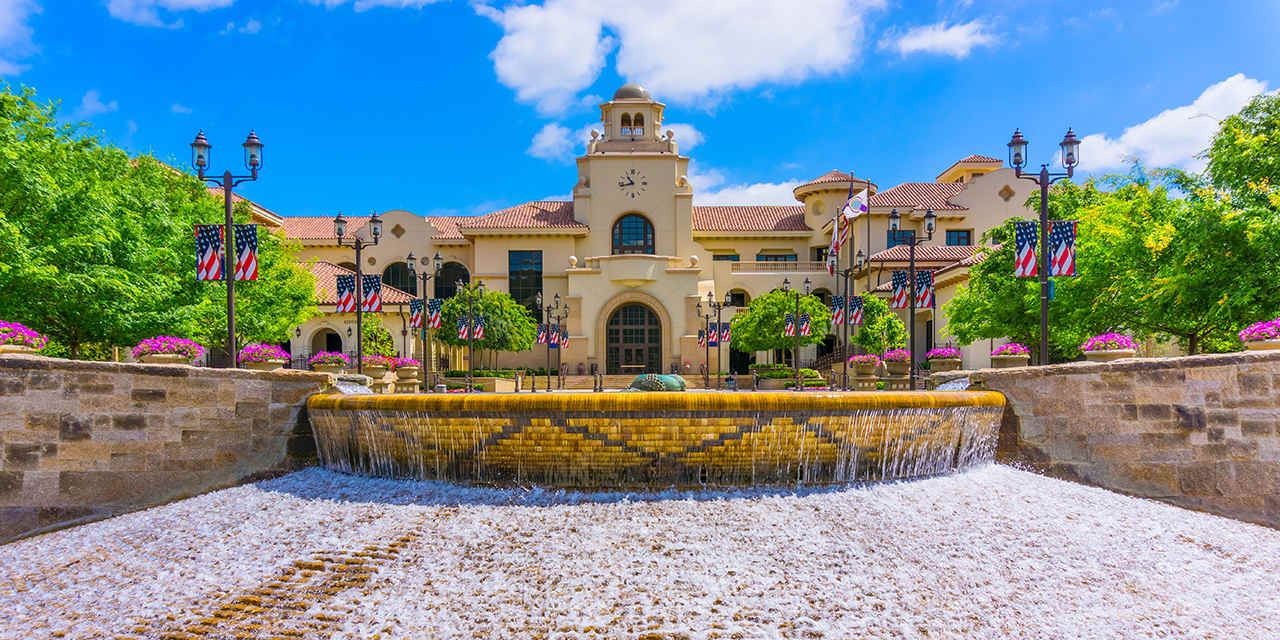
9 Historic Town Squares
Walk around Civic Center Park, in the town of Hanford, and you’d be forgiven for thinking you’d time-machined to the 1920s: There’s a grand auditorium built in 1924, a Mission Revival–style movie theater from 1929, and an ice cream parlour that’s been operating since that decade too. It’s truly a town square—a term that conjures up images of a simpler time: horses and hitching posts, gas lamps, and music from a quartet wafting from a patriotically decorated pavilion.
That’s because town squares are of another era. An era when city planners constructed streets to converge on a community’s focal point—the city hall, perhaps, or a great lawn. In California, creation of these central areas usually occurred in conjunction with the towns’ settling, in the late 19th and early 20th centuries. And as discovery of the state’s treasures led to rapid investment and growth, grand structures arose around the town centers.
Then, of course, life started moving at a faster pace. People spread out, and city planners focused on connecting them with interstate highways. But the appeal of town squares never disappeared; fortunately, neither did much of the architecture that surrounded them. Forward-thinking preservationists saved some buildings in their original states and renovated others to maintain the flavour of a bygone era. Today, these central areas serve as a window into California’s early years.
Yet they’re more than historical relics. A number of California town squares remain true to their intended origin as community gathering places. Today they host farmer’s markets, festivals, and art shows while providing visitors with must-see destinations. Here’s how, and where, to discover California’s town-square past.
Arcata Plaza, Arcata
The History: This college town of almost 18,000, on the state’s far north coast, may be nicknamed “Hippie Haven,” but its official name was a more sombre “Union” when it was settled in 1850. Those pioneers built up this plaza, mostly using wood for construction, but August Jacoby thought to build his store out of brick and stone. As a result, in the wake of an 1875 fire that destroyed dozens of the town’s buildings and businesses, his is the only original building left today. More recent structures, though, are still about 100 years old. The Hotel Arcata dates to 1915; it was once called “Sportsman’s Headquarters” and played host to those to who travelled by rail or steamer. Just off the plaza is the Minor Theatre; opened in 1914, it’s one of the oldest structures in the U.S. built for the sole purpose of showing movies. Don’t leave without debating the merits of slain U.S. President William McKinley—and be sure to do so in front of his eight-foot-tall bronze statue in the plaza, erected in 1906.
Where to Play: Check out August Jacoby’s legacy, the restored Jacoby’s Storehouse, with several restaurants and shops. Have dinner on the 3rd floor at Plaza Grill. You can stay at the Hotel Arcata, though prices have gone up since its 1915 rate of $1/night. Even if you don’t stay there, be sure to check out the lobby’s cool historic decor. Then mix past and present: Catch the latest Hollywood releases at the restored Minor Theatre.
Railroad Square District, Santa Rosa
The History: Trains started appearing here in the 1870s, and a community began to form. It soon became clear that the railroad was so important to Santa Rosa, some 50 miles north of San Francisco, that the train depot should be positioned to act as the town square. And that’s exactly what happened. The depot opened in 1904—an impressive basalt structure built by four Italian stonemasons. Wander around to find a wealth of brick buildings full of character—one-story buildings built from 1915–1925 and warehouses from 1888–1914. Besides the depot, though, the one must-see spot—which you can also thank those Italian stonemasons for—is the gorgeous, multihued Hotel La Rose, which opened in 1907.
Where to Play: Stay at the Hotel La Rose—ideally in the historic Main Building on the top floor, where the slanted roof adds character to the rooms. Don’t miss dinner at the hotel’s Bistro 1907; then start the following day with a single-origin cup of joe at Flying Goat Coffee. Theater lovers should check out what’s on at the nearby 6th Street Playhouse. And to get here and away, take advantage of the updated train service, Sonoma-Marin Area Rail Transit (SMART).
Sonoma Plaza, Sonoma
The History: To many people, Sonoma—just 45 miles from San Francisco—means wine. But when you drink in the surroundings on the eight-acre Sonoma Plaza—the state’s largest plaza—it’s hard to ignore the area’s non-vine history. The park itself was designed 150 years ago by Mariano Vallejo, a military commander and politician who helped transition the Mexican territory of Alta California to the U.S. state we know today. The white, low-rise Mission San Francisco Solano, which borders the park, is even older, dating to 1823; the barracks that housed Mexican soldiers date to 1834. Don’t miss the dramatic stone façade of City Hall, in the middle of the park, dedicated in 1908 and still in use today.
Where to Play: This is the birthplace of California wine, after all, so you’d expect tasting roomsgalore—and you’ll find more than 25 of them in the area, including the intimate tasting room of Walt Wines. But there’s more to do than sip. Relive a bygone era in a different way with retro toys, games, T-shirts, and candies at Tiddle E. Winks Vintage 5 & Dime. And stay at the Ledson Hotel, built by a fifth-generation Sonoma farmer and winemaker.
Courthouse Square, Sonora
The History: Some 40 miles northwest of the entrance to Yosemite National Park is Tuolumne County, incorporated in 1850 as one of California’s original 27 counties. The courthouse, of course, played a key role in the development of this essential local government. Yet the original structure, built in 1853, became dilapidated in just a few decades. The “new” courthouse, designed in the Spanish Revival style and resembling the old missions of California, was completed in 1900; its foundation required 500 barrels of cement, 300 wagonloads of gravel, and 150 loads of sand. Other essential sites include the lobby of the Bradford Place Inn, an old-fashioned B&B built in 1889 as a private residence for a Wells Fargo agent; the Tuolumne County Museum, which formerly served as the jail, dating to 1866; and the Opera Hall.
Where to Play: Learn more about the area’s history at the Tuolumne County Museum; then live it by staying at the Bradford Place Inn. Dine a short walk away at Talulah’s, an Italian spot with a neighborhood feel. Golfers should head to Saddle Creek Golf Resort, one of the top courses in northern California. And of course you’ll want to sample some of the wineries tucked in the foothills, like Ironstone Vineyards.
Civic Center Park, Hanford
The History: Practically smack-dab in the center of the state, Hanford holds plenty of ties to California’s past. Start at the Romanesque Hanford Carnegie Museum, which opened in 1905 as a Carnegie Library; today it’s also a tourist information center. Keep following the history trail at the grand Civic Center Auditorium, which opened in 1924 and still hosts events; and at the Hanford Fox Theater, a 1929 building still used for concerts. And Hanford has what every historic town should have: an authentic ice cream shop (Superior Daily), in operation since the 1920s. Courthouse Square sits a couple miles west of the park, but is worth checking out for the original 1896 structure. While you’re there, don’t miss the Romanesque building from 1898 known as the Bastille; it was used as the county jail until the 1960s. And just east of the park is China Alley, a collection of 11 historic buildings that dates to 1877 and tells the story of the area’s Chinese population.
Where to Play: Obviously, your itinerary has to include ice cream at Superior Dairy, ideally followed by a show at the Hanford Fox Theater. For a historical stay, head to the Irwin Street Inn—a mash-up of four Victorian homes that maintain details like pull-chain toilets and claw-foot tubs. And for an authentic Mexican meal, check out La Fiesta Restaurant Bar, which serves up flavors from Colima and Michoacán.
Downtown City Park, Paso Robles
The History: The town of Paso Robles, halfway between San Francisco and Los Angeles in the Central Coast region, is known for its thermal baths, wineries, and almonds (having once been home to the world’s largest concentration of almond orchards). But there’s also some impressive architectural history in and around Downtown City Park, which was designed in approximately 1890 by the town founders (one of whom was the uncle of outlaw Jesse James). One example: the Carnegie Library, a Classical Revival building which opened in 1908 and today plays host to the Historical Society. Also check out the Paso Robles Inn, where the likes of Teddy Roosevelt and Clark Gable have stayed. The original dates to 1891; the current version was built in 1941, and the area’s famous thermal springs (a draw since the late 18th century) still run there.
Where to Play: Stay in the Spanish mission–style Paso Robles Inn, and book a room with an outdoor Jacuzzi fed by the Paso Robles hot springs. Or opt for the 16-room luxury Hotel Cheval. Need something to drink? You’ll find more than 15 tasting rooms here; the red-focused Pianetta Winery is close to the park. And don’t miss the food scene: Try Artisan, featuring wood-fired pizzas made with local ingredients.
Plaza Square Park, Old Towne Orange
The History: Town-square aficionados will say that Orange, about 30 miles south of Los Angeles and founded in 1871, planned things right by starting with a plaza and building out. This area is now a one-square-mile historic district known as Old Towne, and it’s hard to take a step without stumbling upon history, beginning with the plaza’s 1937 fountain. You’ll find more than 1,300 homes and buildings here; many of them are originals that date to the years after 1871, and all are covered under the district’s listing on the National Register of Historic Places. It all feels very connected to the early 20th century, thanks to places like Watson Drugs and Soda Fountain, which has been a part of the fabric here for more than a hundred years.
Where to Play: Watson Drugs and Soda Fountain serves up the dishes you might expect from an authentic old-fashioned soda fountain. For more formal dining—with a view, to boot—head to Orange Hill, which, true to its name, sits atop the hills of Orange and offers sweeping panoramas out to Catalina. When it’s time to shop, Old Towne Orange is known as “The Antique Capital of California,” and you’ll find more than 40 antiques shops, like the Antique Station & Depot and the Chapman Antique Mall. Then check out live music at The District Lounge, built inside Orange’s first post office.
Old Town Temecula
The History: A horseshoe-shaped town square anchors Old Town Temecula, where you’ll find plenty of historical action. Not surprisingly, many of the buildings went up around 1883, the year the Southern California Railroad brought travellers and commerce to the Temecula Valley. One of those structures, the Hotel Temecula, had to be rebuilt in 1891—but that structure still stands (and you can stay there). You can also still see the town’s first church building, St Catherine’s—though the 1917 structure has been moved to Sam Hicks Monument Park, at the northern end of Old Town. Other original buildings have been refurbished and given new missions: The 1890 Mercantile building is now the entrance to the Temecula Community Theater; and the 1st National Bank, built in 1914, is now a Mexican restaurant.
Where to play: the Hotel Temecula hasn’t always been open to guests, but it is now. Start your day with sustainable coffee at E.A.T. Marketplace, or pop in anytime for locally sourced dishes. Pop in for a pizza with innovative combinations of fresh toppings at The Goat and Vine. Head to Old Town’s original bank, which is now a Mexican restaurant called, fittingly, The Bank. Or try the namesake burger at 1909, in an original building that has also been home to a trading post, a livery and a garage. Browse for antiques at Serendipity Antiques and relax in the outdoor garden. If the children need a break from all this history, take them to Pennypickle’s Workshop, Temecula’s children’s museum. And if you want a break from them, experience the country-music scene—complete with line dancing and mechanical bull–riding—at the Temecula Stampede. Or find out what’s on at the Old Town Temecula Community Theater.


